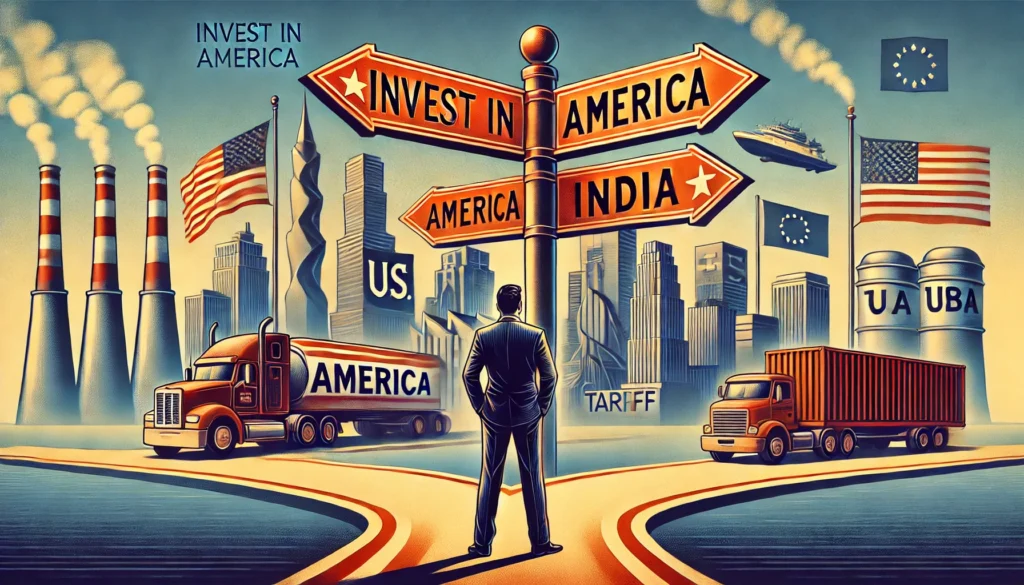Published Date: March 17, 2025 ✍️ Author: Global World Citizen News Team 📰 Source: GlobalWorldCitizen.com
America’s Allure for Global Companies
For multinational corporations, the United States remains the world’s most attractive market. With China and Europe facing economic slowdowns, the U.S. continues to grow steadily, accounting for nearly 30% of global consumer spending and holding a dominant position in foreign direct investment (FDI)—valued at approximately $5 trillion.
However, under President Donald Trump, doing business in the U.S. has become far more complicated. His aggressive tariff policies have raised the cost of exports to the country while creating regulatory uncertainty, forcing global firms to rethink their investment strategies.
Tariffs: A Risk or an Opportunity for Foreign Firms?
Since returning to office, Trump has rapidly escalated tariffs, often making abrupt and unexpected changes.

- A 25% tariff on Canada and Mexico was rolled out—only for temporary exemptions to be introduced days later.
- A 10% tariff on Chinese goods was doubled within months.
- A 50% tariff on Canadian steel and aluminum was announced on March 11, only to be scaled back hours later.
- A 200% tariff on European wine and alcohol has been floated, but without clear details.
These erratic policies leave foreign companies facing a dilemma:


Foreign Investment: Will It Boom or Bust Under Trump?
Foreign direct investment in the U.S. has surged in recent years. In 2024, greenfield FDI hit a record $231 billion, more than doubling from $97 billion five years ago.
Under Joe Biden, subsidies for electric vehicles, green energy, and semiconductors played a major role in attracting global firms. Trump, however, prefers tariffs over subsidies, aiming to force companies to build in America rather than benefit from incentives.
Certain foreign firms—particularly those that rely heavily on U.S. sales—are now vulnerable to these policies.
The Four Foreign Sectors Most at Risk
Based on an analysis of the world’s 100 largest non-American firms, four key industries face major challenges:












Major Foreign Companies Betting on America
Despite the risks, several multinational corporations have announced massive new investments in U.S. manufacturing:











Mixed Investor Reactions
Markets have responded cautiously to these moves. Of the six publicly traded companies that have announced U.S. expansion plans:


“Factories are 20-year investments,” notes one consulting executive. “Companies must consider whether tariffs will still be in place when Trump leaves office.”
The Challenges of Moving Operations to the U.S.
For many foreign firms, shifting production to America isn’t easy:

- In 2017, Foxconn promised a $10 billion investment in Wisconsin, with 13,000 jobs.
- Trump hailed it as the “Eighth Wonder of the World.”
- By 2024, Foxconn had only spent $1 billion and created 1,000 jobs.

- LVMH expanded U.S. handbag production in Trump’s first term to avoid tariffs.
- However, European heritage remains a core selling point—making future moves difficult.

- Many automobiles and pharmaceuticals cross borders multiple times during production.
- Relocating factories isn’t always cost-effective.
Could Foreign Investment Flow Elsewhere Instead?
If Trump’s tariffs persist, some global firms may simply look elsewhere.

- In 2016, Chinese companies generated 50% of their foreign sales in the U.S.
- By 2024, this had dropped to just 25%.
- Instead, they are turning to fast-growing economies in the Global South.

- In 2016: $8.2 billion
- In 2024: $6.5 billion
If the U.S. becomes too costly, other multinational firms may follow suit.
Are Tariffs the Best Way to Boost U.S. Investment?
If Trump’s goal is to drive foreign companies to build in America, there are alternative policies that could be more effective than tariffs.


“Fixing America’s permitting process would be far more effective than tariffs,” said a global business strategist.
Bottom Line: Will Foreign Investment Surge or Stumble?
Trump’s tariffs may push some companies to expand in the U.S.—but they may also drive others away.


With Trump’s economic policies in flux, foreign firms face difficult choices: Double down on the U.S. or diversify away from it? The answer could shape the future of global investment for years to come.

